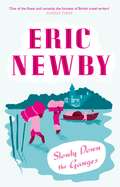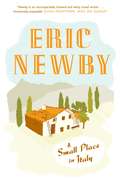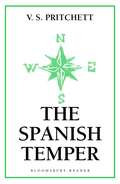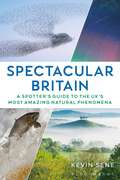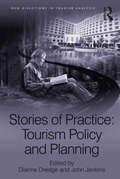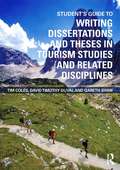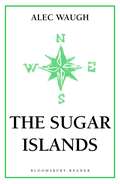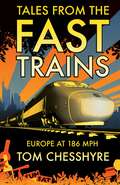- Table View
- List View
Scottish Aviation Jetstream - Twin-engined Pilot Trainer (UEB contracted)
by RnibThis is an image of an aircraft seen from above. There is a locator dot shown, which will be at the top left of the page when the image is the correct way up. The image is in the centre and a scale in metres on the left of the page. The aircraft's nose is in the top centre and the tail in the bottom centre of the page. The fuselage goes up and down the middle of the page. The cockpit is shown as a curved window near the nose. The wings go out to the left and right. Sticking out from the front edge of each wing there is an engine with a propeller to the left and right of the fuselage. The bottom edge of the wing has three flaps on each side and the tail wing has one flap on each side. These are the ailerons used to manoeuvre the aircraft when it is flying. The tailplane has a long vertical tail which starts to rise from the fuselage just down from the centre of the image. The tail wing sticks out from the vertical tail halfway up it. The tips of the main wings and the leading half of the tailplane are red. The upper half of the fuselage is red, apart from the nose only a small part of this can be seen. The roof is white. The textures on the tactile image reflect structure not colour. There is a different texture for cockpit, wings, fuselage and engine.
Scottish Aviation Jetstream - Twin-engined Pilot Trainer (UEB uncontracted)
by RnibThis is an image of an aircraft seen from above. There is a locator dot shown, which will be at the top left of the page when the image is the correct way up. The image is in the centre and a scale in metres on the left of the page. The aircraft's nose is in the top centre and the tail in the bottom centre of the page. The fuselage goes up and down the middle of the page. The cockpit is shown as a curved window near the nose. The wings go out to the left and right. Sticking out from the front edge of each wing there is an engine with a propeller to the left and right of the fuselage. The bottom edge of the wing has three flaps on each side and the tail wing has one flap on each side. These are the ailerons used to manoeuvre the aircraft when it is flying. The tailplane has a long vertical tail which starts to rise from the fuselage just down from the centre of the image. The tail wing sticks out from the vertical tail halfway up it. The tips of the main wings and the leading half of the tailplane are red. The upper half of the fuselage is red, apart from the nose only a small part of this can be seen. The roof is white. The textures on the tactile image reflect structure not colour. There is a different texture for cockpit, wings, fuselage and engine.
Scottish Aviation Twin Pioneer- STOL Tactical Light Transport (large print)
by RnibThis is an image of an aircraft seen from above. There is a locator dot shown, which will be at the top left of the page when the image is the correct way up. The image is in the centre and a scale in metres on the left of the page. The aircraft's nose is in the top centre and the tail in the bottom centre of the page. The fuselage goes up and down the middle of the page. The cockpit is shown as two small windows near the nose. The wings go out to the left and right. Sticking out from the front edge of each wing is an engine with propellers, to the left and right of the fuselage. The bottom edge of the wing has three flaps on each side and the tail wing has one flap on each side. These are the ailerons used to manoeuvre the aircraft when it is flying. The tailplane has three vertical tails, one in the middle and one to either side. The tips of the main wings and the leading half of the tailplane are red. The upper half of the fuselage is red, apart from the nose only a small part of this can be seen. The roof is white. The textures on the tactile image reflect structure not colour. There is a different texture for the cockpit, wings, fuselage and engine.
Scottish Aviation Twin Pioneer- STOL Tactical Light Transport (UEB contracted)
by RnibThis is an image of an aircraft seen from above. There is a locator dot shown, which will be at the top left of the page when the image is the correct way up. The image is in the centre and a scale in metres on the left of the page. The aircraft's nose is in the top centre and the tail in the bottom centre of the page. The fuselage goes up and down the middle of the page. The cockpit is shown as two small windows near the nose. The wings go out to the left and right. Sticking out from the front edge of each wing is an engine with propellers, to the left and right of the fuselage. The bottom edge of the wing has three flaps on each side and the tail wing has one flap on each side. These are the ailerons used to manoeuvre the aircraft when it is flying. The tailplane has three vertical tails, one in the middle and one to either side. The tips of the main wings and the leading half of the tailplane are red. The upper half of the fuselage is red, apart from the nose only a small part of this can be seen. The roof is white. The textures on the tactile image reflect structure not colour. There is a different texture for the cockpit, wings, fuselage and engine.
Scottish Aviation Twin Pioneer- STOL Tactical Light Transport (UEB uncontracted)
by RnibThis is an image of an aircraft seen from above. There is a locator dot shown, which will be at the top left of the page when the image is the correct way up. The image is in the centre and a scale in metres on the left of the page. The aircraft's nose is in the top centre and the tail in the bottom centre of the page. The fuselage goes up and down the middle of the page. The cockpit is shown as two small windows near the nose. The wings go out to the left and right. Sticking out from the front edge of each wing is an engine with propellers, to the left and right of the fuselage. The bottom edge of the wing has three flaps on each side and the tail wing has one flap on each side. These are the ailerons used to manoeuvre the aircraft when it is flying. The tailplane has three vertical tails, one in the middle and one to either side. The tips of the main wings and the leading half of the tailplane are red. The upper half of the fuselage is red, apart from the nose only a small part of this can be seen. The roof is white. The textures on the tactile image reflect structure not colour. There is a different texture for the cockpit, wings, fuselage and engine.
Short Belfast RAF Aircraft (UEB uncontracted)
by RnibThis is an image of an aircraft seen from above. There is a locator dot shown, which will be at the top left of the page when the image is the correct way up. The image is in the centre and a scale in metres on the left of the page. The aircraft's nose is in the top centre and the tail in the bottom centre of the page. The fuselage goes up and down the middle of the page. At the top of the page is a re-fuelling nozzle which crosses the cockpit and sticks out in front of the aircraft. The cockpit is shown as a curved window near the nose. The wings go out to the left and right. Sticking out from the front edge of the wing there are two engines with propellers on each wing to the left and right of the fuselage. The bottom edge of the wing has three flaps on each side and the tail wing has two flaps on each side. These are the ailerons used to manoeuvre the aircraft when it is flying. The tailplane has a vertical tail in the middle. The aircraft is coloured a pale grey. The textures on the tactile image reflect structure not colour. There is a different texture for the cockpit, wings, fuselage and engines.
Slowly Down the Ganges (Picador Bks.)
by Eric Newby‘Slowly Down the Ganges’ is seen as a vintage Newby masterpiece, alongside ‘A Short Walk in the Hindu Kush’ and ‘Love and War in the Apennines’. Told with Newby's self-deprecating humour and wry attention to detail, this is a classic of the genre and a window into an enchanting piece of history.
A Small Place in Italy (Lonely Planet Journeys Ser.)
by Eric NewbyThis book is a lush and beautiful memoir of a very special house and a superb recreation of a bygone era.
Spain Overview Map and Detail of Costa del Sol (tactile)
by RnibThis is a tactile diagram for GCSE level students. It covers three pages, and starts with an overview map of Spain, showing the region of Costa del Sol. The next two pages are the key to the detailed map, and the detailed map of Costa del Sol respectively. Towns, peaks and coastal features are included.
The Spanish Temper
by V. S. PritchettEliciting comparisons to Orwell's Homage to Catalonia, Pritchett's meditative work on Spain is comprised of a string of sketches, woven around the author's musings on the Spanish character.Having lived in Spain for four years during the 1920s, Pritchett is well placed to deliver such a report, and his resulting narrative is both well informed and delightfully written.
Spectacular Britain: A spotter's guide to the UK’s most amazing natural phenomena
by Kevin SeneFrom the Northern Lights to whirling coastal birds, and sunken villages to the annual deer rut, the UK is home to some of the world's finest natural spectacles. With this guide and a little luck, you too can experience the magic of seeing something truly extraordinary.Start planning your spectacular year with the help of this practical guide to the UK's most magical natural phenomena. This guide shows you when and where to go, and how to maximise your chances of a sighting, as well as explaining why these amazing spectacles occur in the first place. Sections cover: - Space: meteor showers, eclipses and supermoons, Northern Lights - Weather: hidden currents, mountain waves, named winds - Tides: tidal bores, tidal races, low tide walks - Land: autumn colours, wildflower displays, rutting deer - Rivers and lakes: salmon runs, sunken villages, waterfall wonders - Coast: wheeling waterbirds, seabird cities, seal pupsEach spectacle is graded according to how easy it is to spot, and the author gives expert tips on achieving the best sighting. Scientific insights describe the astronomical, meteorological and ecological causes of events, which are brought to life through the stories of the people who know them best, from the glider pilots who ride mountain waves to the King's Guides who help people navigate the dangerous sands of Morecombe Bay. This is your starting point for some truly phenomenal adventures.
Stories of Practice: Tourism Policy and Planning (New Directions in Tourism Analysis)
by Dianne Dredge John JenkinsAnalyses of contemporary tourism planning and policymaking practice at local to global scales is lacking and there is an urgent need for research that informs theory and practice. Illustrated with a set of cohesive, theoretically-informed, international case studies constructed through storytelling, this volume expands readers' knowledge about how tourism planning and policymaking takes place. Challenging traditional notions of tourism planning and policy processes, this book also provides critical insights into how theoretical concepts and frameworks are applied in tourism planning and policy making practice at different spatial scales. The book engages readers in the intellectual, political, moral and ethical issues that often surround tourism policymaking and planning, highlighting the great value of reflective learning grounded in the social sciences and revealing the complexity of tourism planning and policy.
Stories of Practice: Tourism Policy and Planning (New Directions in Tourism Analysis)
by Dianne Dredge John JenkinsAnalyses of contemporary tourism planning and policymaking practice at local to global scales is lacking and there is an urgent need for research that informs theory and practice. Illustrated with a set of cohesive, theoretically-informed, international case studies constructed through storytelling, this volume expands readers' knowledge about how tourism planning and policymaking takes place. Challenging traditional notions of tourism planning and policy processes, this book also provides critical insights into how theoretical concepts and frameworks are applied in tourism planning and policy making practice at different spatial scales. The book engages readers in the intellectual, political, moral and ethical issues that often surround tourism policymaking and planning, highlighting the great value of reflective learning grounded in the social sciences and revealing the complexity of tourism planning and policy.
The Stranger: A Novel (Patrik Hedstrom and Erica Falck #4)
by Camilla LackbergTo avoid disappointment, please note this book was previously published under the title THE GALLOWS BIRD. Swedish crime sensation and No. 1 international bestseller, Camilla Lackberg’s fourth psychological thriller - for fans of Stieg Larsson and Jo Nesbo.
Student's Guide to Writing Dissertations and Theses in Tourism Studies and Related Disciplines
by Tim Coles David Timothy Duval Gareth ShawAround the world every year very many students have to complete dissertations or theses as part of their undergraduate or masters studies in tourism and related subjects. Often this substantial piece of self-directed work is the culmination of their programmes. More than just a means to consolidate their final grades, it is also an exciting chance to research a topic of their choosing and a potential gateway to more advanced study as well as job offers and future career paths. Yet for all these reasons, many students view the dissertation as a tricky challenge. This comprehensive book intends to take the stress and anxiety out of doing a dissertation in tourism studies and related disciplines. The process is examined from the germination of an idea to the submission and assessment of the final document. Written primarily for students conducting independent research for the first time, this book offers simple advice and a clear framework which students can adopt even in more advanced studies at masters and doctoral level. This book debunks popular myths, and aims to overcome common pitfalls. It focuses on the aims and objectives as the DNA of every dissertation. Rather than view it as a single, overwhelming project, the dissertation is presented as a series of more modest, manageable yet crucially inter-linked tasks that all students can successfully complete through careful preparation and effective time management. Dissertations are not to be underestimated and they demand great care and attention, but they can also be immensely rewarding and enriching experiences academically and personally. This ‘jargon free’ book is also written with overseas students specifically in mind, drawing directly on our overseas students’ experiences. This valuable resource contains start of chapter learning objectives and end of chapter checklists, as well as numerous boxed case studies, to further help assist students through their dissertation.
Student's Guide to Writing Dissertations and Theses in Tourism Studies and Related Disciplines
by Tim Coles David Timothy Duval Gareth ShawAround the world every year very many students have to complete dissertations or theses as part of their undergraduate or masters studies in tourism and related subjects. Often this substantial piece of self-directed work is the culmination of their programmes. More than just a means to consolidate their final grades, it is also an exciting chance to research a topic of their choosing and a potential gateway to more advanced study as well as job offers and future career paths. Yet for all these reasons, many students view the dissertation as a tricky challenge. This comprehensive book intends to take the stress and anxiety out of doing a dissertation in tourism studies and related disciplines. The process is examined from the germination of an idea to the submission and assessment of the final document. Written primarily for students conducting independent research for the first time, this book offers simple advice and a clear framework which students can adopt even in more advanced studies at masters and doctoral level. This book debunks popular myths, and aims to overcome common pitfalls. It focuses on the aims and objectives as the DNA of every dissertation. Rather than view it as a single, overwhelming project, the dissertation is presented as a series of more modest, manageable yet crucially inter-linked tasks that all students can successfully complete through careful preparation and effective time management. Dissertations are not to be underestimated and they demand great care and attention, but they can also be immensely rewarding and enriching experiences academically and personally. This ‘jargon free’ book is also written with overseas students specifically in mind, drawing directly on our overseas students’ experiences. This valuable resource contains start of chapter learning objectives and end of chapter checklists, as well as numerous boxed case studies, to further help assist students through their dissertation.
The Sugar Islands: A Collection of Pieces Written About the West Indies Between 1928 and 1953
by Alec WaughAlec Waugh first saw the West Indies on a trip round the world in 1926 when his ship called in at Guadeloupe. Fifteen months later he returned for a long stay at Martinique; it was the beginning of a lifelong interest in these fascinating islands that were to provide him with the material for many books and articles. In The Sugar Islands, a book to be dipped into at leisure, Mr. Waugh has selected pieces from his writings, with the intention of compiling both a travelogue (there is a wealth of interesting information for the would-be traveller about the ways of life and customs of each island) and a chronological commentary on the development of the islands during the last thirty years.The book is divided into four parts. In the first, the author gives an idea of the background of the West Indies by drawing a detailed picture of the colourful life of Martinique. He tells the story of a 17th-century Frenchman who joined the famous pirates of Tortugja and the history of the long bloodbath that preceeded the declaration of independence of Haiti, the Black Republic. The second part of the book comprises four character sketches, including three stories of black magic, and two sections deal with the individual charm and interest of each of the islands: Montserrat, Barbados, Anguilla, Trinidad, St. Vincent, Tortola, the U.S. Virgin Islands, Saba, Antigua, Dominica and Puerto Rico.
Super Sports Car (large print)
by RnibThis page shows an image of a side view of a red super sports car with the bonnet on the right and the boot on the left of the page. There is a locator dot shown, which will be at the top left of the page when the image is the correct way up. On the left of the page the rear light can be found in the centre left of the car. Up and right from this the roof slopes off very gently away from the wheel arch. It then slopes down gently. The shape runs smoothly into the sloping windscreen and on to the rounded bonnet. The car is very streamlined and low on the ground. There is a large wheel with spokes to the bottom right and left of the image. Between the wheels is the door with a curved triangular window. In the bottom right of the window is a wing mirror sticking out towards you. To the right of the mirror is the side of the windscreen. A long shape which narrows to the right overlaps the bottom left of the door. This is a curved indent in the car so the bottom of the door curves in. It gets deeper to the left where there is an opening into the centrally positioned engine. This provides air to the engine for combustion.The engine is big for a small car meaning it will be very fast. It will also be very expensive.
Super Sports Car (UEB contracted)
by RnibThis page shows an image of a side view of a red super sports car with the bonnet on the right and the boot on the left of the page. There is a locator dot shown, which will be at the top left of the page when the image is the correct way up. On the left of the page the rear light can be found in the centre left of the car. Up and right from this the roof slopes off very gently away from the wheel arch. It then slopes down gently. The shape runs smoothly into the sloping windscreen and on to the rounded bonnet. The car is very streamlined and low on the ground. There is a large wheel with spokes to the bottom right and left of the image. Between the wheels is the door with a curved triangular window. In the bottom right of the window is a wing mirror sticking out towards you. To the right of the mirror is the side of the windscreen. A long shape which narrows to the right overlaps the bottom left of the door. This is a curved indent in the car so the bottom of the door curves in. It gets deeper to the left where there is an opening into the centrally positioned engine. This provides air to the engine for combustion. The engine is big for a small car meaning it will be very fast. It will also be very expensive.
Super Sports Car (UEB uncontracted)
by RnibThis page shows an image of a side view of a red super sports car with the bonnet on the right and the boot on the left of the page. There is a locator dot shown, which will be at the top left of the page when the image is the correct way up. On the left of the page the rear light can be found in the centre left of the car. Up and right from this the roof slopes off very gently away from the wheel arch. It then slopes down gently. The shape runs smoothly into the sloping windscreen and on to the rounded bonnet. The car is very streamlined and low on the ground. There is a large wheel with spokes to the bottom right and left of the image. Between the wheels is the door with a curved triangular window. In the bottom right of the window is a wing mirror sticking out towards you. To the right of the mirror is the side of the windscreen. A long shape which narrows to the right overlaps the bottom left of the door. This is a curved indent in the car so the bottom of the door curves in. It gets deeper to the left where there is an opening into the centrally positioned engine. This provides air to the engine for combustion. The engine is big for a small car meaning it will be very fast. It will also be very expensive.
Supermarine Spitfire (large print)
by RnibThis page shows two images of an aircraft. At the top of the page seen from the side and in the bottom and middle of the page a plan view seen from above. There is a locator dot shown, which will be at the top left of the page when the image is the correct way up. Both views have the front on the left and the tail on the right of the page. The aircraft is shown in a flying position so the wheels are retracted and not shown. The aircraft in the top of the page has the propeller on the left with one blade pointing up and one pointing down. The nose cone is pale grey. Right from this is a rectangle which comprises six exhaust outlets. Down and right from the exhaust is the tip of the wing pointing towards you. The front edge on the left has a cannon sticking out. Up from the wing in the middle top of the fuselage is the cockpit cover shown as two windows. The centre of the fuselage has letters identifying which individual aircraft it is. There is also red and blue roundel indicating the plane belongs to the RAF. On the top edge of the fuselage there is an aerial sticking up. Right of this the fuselage continues to the vertical tail fin on the right. At base of the fin is the end of one of the tail wings. Right of this is a vertical flap. This is one of the ailerons used to manoeuvre the aircraft when it is flying. The tail has a red rectangle and a blue rectangle separated by a white line indicating the plane belongs to the RAF. In the plan view image in the bottom and middle of the page the fuselage goes from left to right in the centre of the image. The main wings go up and down the page from the fuselage. In the left of the page the propeller has one blade pointing up and one pointing down. The tip of the nose cone is pale grey. To the right of the propeller six exhaust outlets can be found on the top and bottom edge of the fuselage. Right of this are the wings. Each wing has two cannons mounted on the front edge. In the centre of each wing there is a red and blue roundel indicating the plane belongs to the RAF. On the right of each wing tip is a flap. These are two of the ailerons used to manoeuvre the aircraft when it is flying. In the centre of the fuselage between the wings is the cockpit shown as two windows. The fuselage continues to the right ending in the tailplane. On the right of each tail wing is a flap. These are two more of the ailerons used to manoeuvre the aircraft when it is flying.
Supermarine Spitfire (UEB contracted)
by RnibThis page shows two images of an aircraft. At the top of the page seen from the side and in the bottom and middle of the page a plan view seen from above. There is a locator dot shown, which will be at the top left of the page when the image is the correct way up. Both views have the front on the left and the tail on the right of the page. The aircraft is shown in a flying position so the wheels are retracted and not shown. The aircraft in the top of the page has the propeller on the left with one blade pointing up and one pointing down. The nose cone is pale grey. Right from this is a rectangle which comprises six exhaust outlets. Down and right from the exhaust is the tip of the wing pointing towards you. The front edge on the left has a cannon sticking out. Up from the wing in the middle top of the fuselage is the cockpit cover shown as two windows. The centre of the fuselage has letters identifying which individual aircraft it is. There is also red and blue roundel indicating the plane belongs to the RAF. On the top edge of the fuselage there is an aerial sticking up. Right of this the fuselage continues to the vertical tail fin on the right. At base of the fin is the end of one of the tail wings. Right of this is a vertical flap. This is one of the ailerons used to manoeuvre the aircraft when it is flying. The tail has a red rectangle and a blue rectangle separated by a white line indicating the plane belongs to the RAF. In the plan view image in the bottom and middle of the page the fuselage goes from left to right in the centre of the image. The main wings go up and down the page from the fuselage. In the left of the page the propeller has one blade pointing up and one pointing down. The tip of the nose cone is pale grey. To the right of the propeller six exhaust outlets can be found on the top and bottom edge of the fuselage. Right of this are the wings. Each wing has two cannons mounted on the front edge. In the centre of each wing there is a red and blue roundel indicating the plane belongs to the RAF. On the right of each wing tip is a flap. These are two of the ailerons used to manoeuvre the aircraft when it is flying. In the centre of the fuselage between the wings is the cockpit shown as two windows. The fuselage continues to the right ending in the tailplane. On the right of each tail wing is a flap. These are two more of the ailerons used to manoeuvre the aircraft when it is flying.
Supermarine Spitfire (UEB uncontracted)
by RnibThis page shows two images of an aircraft. At the top of the page seen from the side and in the bottom and middle of the page a plan view seen from above. There is a locator dot shown, which will be at the top left of the page when the image is the correct way up. Both views have the front on the left and the tail on the right of the page. The aircraft is shown in a flying position so the wheels are retracted and not shown. The aircraft in the top of the page has the propeller on the left with one blade pointing up and one pointing down. The nose cone is pale grey. Right from this is a rectangle which comprises six exhaust outlets. Down and right from the exhaust is the tip of the wing pointing towards you. The front edge on the left has a cannon sticking out. Up from the wing in the middle top of the fuselage is the cockpit cover shown as two windows. The centre of the fuselage has letters identifying which individual aircraft it is. There is also red and blue roundel indicating the plane belongs to the RAF. On the top edge of the fuselage there is an aerial sticking up. Right of this the fuselage continues to the vertical tail fin on the right. At base of the fin is the end of one of the tail wings. Right of this is a vertical flap. This is one of the ailerons used to manoeuvre the aircraft when it is flying. The tail has a red rectangle and a blue rectangle separated by a white line indicating the plane belongs to the RAF. In the plan view image in the bottom and middle of the page the fuselage goes from left to right in the centre of the image. The main wings go up and down the page from the fuselage. In the left of the page the propeller has one blade pointing up and one pointing down. The tip of the nose cone is pale grey. To the right of the propeller six exhaust outlets can be found on the top and bottom edge of the fuselage. Right of this are the wings. Each wing has two cannons mounted on the front edge. In the centre of each wing there is a red and blue roundel indicating the plane belongs to the RAF. On the right of each wing tip is a flap. These are two of the ailerons used to manoeuvre the aircraft when it is flying. In the centre of the fuselage between the wings is the cockpit shown as two windows. The fuselage continues to the right ending in the tailplane. On the right of each tail wing is a flap. These are two more of the ailerons used to manoeuvre the aircraft when it is flying.
Survivor: The Autobiography (Brief Histories Ser.)
by Jon E. LewisThis collection of classic tales comprises over 50 accounts of true-life adventure taken from contemporary memoirs, letters and journals. They span the years 1800 to the end of the 20th century, in a period which can be termed the modern age of exploration. Inspired by Ernest Shackleton's 1914-15 escape from the bitter clutches of Antarctica, this book is by turn inspirational, harrowing, tragic and unimaginable. It recounts stories of ordinary mortals who achieved extraordinary things. From the ice-locked poles and endless deserts of Arabia to the storm-tossed South Atlantic, the rainforests of the Amazon and sheer peaks of the Himalayas, the world's most famous adventurers recount their experiences.Includes accounts from some of the greatest ever explorers and adventurers: Captain Scott, Ernest Shackleton; John Franklin, Edmund Hilary, Laurens Van der Post, Thor Heyerdahl, John Blashford-Snell, Ranulp Fiennes, Chay Blyth, Jacques Cousteau, Nick Danziger,; Charles Lindbergh, Peter Fleming and many more.
Tales from the Fast Trains: Around Europe at 186mph
by Tom ChesshyreTired of airport queues and delays, Tom Chesshyre embarks on a series of high-speed adventures across the Continent on its fast trains instead. He travels to places that wouldn’t feature on a standard holiday wish-list and discovers the hidden delights of mysterious Luxembourg, super-trendy Rotterdam and much-maligned Frankfurt.

